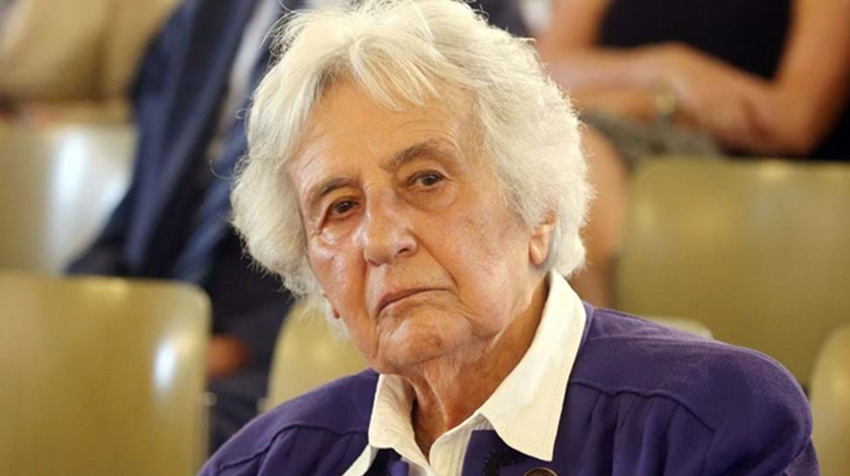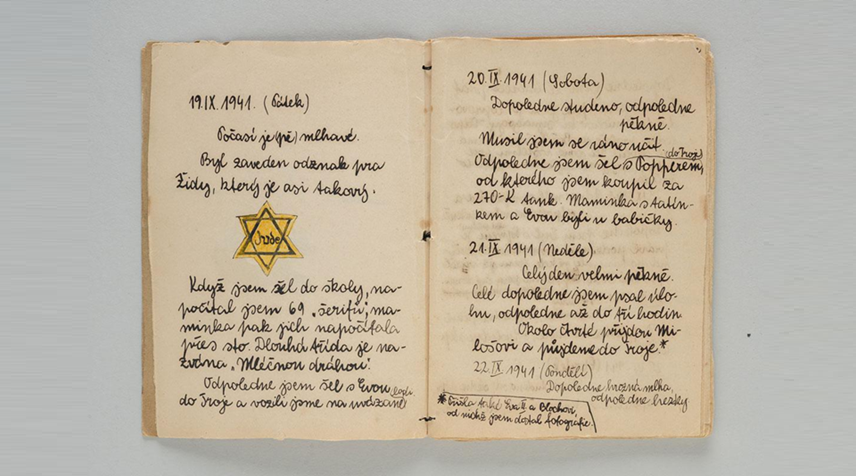Wolfgang Kumm/picture alliance via Getty Images
For four decades, she didn't speak of the past. Even her children were kept in the dark about her suffering. The cello, which she had learned in Berlin, saved her from the gas chamber and the crematorium. She played for the dead, the living, and the executioners. The last survivor of the Auschwitz women's orchestra, Anita Lasker-Wallfisch, who turned one century of existence on 17 July, has no doubt: no memorial can come close to what happened.
Silence and Secrecy
It took 40 years for the silence to speak. She couldn't find the words to tell her children that she, reduced to a number 69388, was playing her music just meters from the Nazi slaughter. Not even her husband, pianist Peter Wallfisch, could know her pain, a pain full of losses. Anita Lasker-Wallfisch, living in London since 1946, with a golden career as a cellist, had striven for other earthly heavens; starting life from scratch since April 1945. Her daughter, Maya Jacobs-Wallfisch, a psychotherapist specializing in transgenerational trauma, always knew that her mother "kept a dark secret." Although she never told her, Maya discovered it: "One day, rummaging through a drawer, I found shocking photos of Bergen-Belsen," the Nazi camp where her mother and aunt had been transferred in the winter of 1944. In 1996, Anita Wallfisch split her biography in half and published the book Inherit the Truth 1939-1945: The Documented Experiences of a Survivor of Auschwitz and Belsen. She is alive for one reason: "The fact that there was music obviously contributed to my survival." With the tragic experience in the Shoah, the unimaginable had passed. He had been part of the women's orchestra at the extermination camp in occupied Poland, founded in April 1943 by SS-Oberaufseherin Maria Mandel, the Austrian commandant known as the Beast of Auschwitz.
Auschwitz Women's Orchestra
It played at the gates of Auschwitz when the slaves left on foot in the morning to work their murderous routine, and played at night when they returned. It was also there that, on Sundays, he gave concerts for the camp guards. Other days, for some SS women who craved music to entertain evil. While mass deportations were taking place in Eastern Europe, which caused an uncontrolled influx of Jews into Auschwitz, the orchestra was obliged to play to soothe the spirits of the condemned, because it gave them the illusion of salvation and allowed the Nazis to kill with greater speed.
The idea of organizing an orchestra did not arise with the aim of saving lives. The Germans wanted a propaganda tool for visitors. And they did. Music in a place of death. Although the Nazi order stipulated that Jewish women would not be admitted, the insufficient number of prisoners who knew how to play musical instruments allowed them to change their minds. Initially directed, by order of the SS, by the music teacher and political prisoner, the Polish Zofia Czajkowska, a relative of Tchaikovsky, she was replaced by another prisoner, the Jewish violinist Alma Rosé, niece of the composer Gustav Mahler. The repertoire began with German marches and expanded to include Polish folk and military melodies that Zofia Czajkowska transcribed from memory. They performed Beethoven, Brahms Dworak, and Mendelssohn—whose name, due to his Jewish origins, would never be mentioned—Rossini, Puccini, Verdi, and even Chopin. After Alma Rosé died of poisoning, the replacement fell to Sonia Winogradow, a Ukrainian pianist.
The orchestra members were first placed in barrack 10, occupied by German prisoners, and then in Block 12, near crematorium I, with an unrestricted view of the death chute. Cellist Anita Lasker-Wallfisch saw people, many people, columns of people heading toward the gas chambers, only to be transformed into smoke. She saw the living being placed in the crematorium ovens. Between April and early July 1944, she witnessed "Operation Hungary," which culminated in the annihilation of 475,000 Hungarian Jews—half of Hungary's Jewish population. Revisionist theories, which deny the Holocaust, which deny what their eyes recorded, persist. The distinguished Israeli historian Yehuda Bauer is right: "People rarely learn from history."
Rise of Nazism, Arrest, and Deportation
The daughter of a notable lawyer, Alfons Salomo Lasker, and Edith Lasker, a brilliant violinist, Anita was born in July 1926 in Breslau, then part of Germany, now in Poland and renamed Wroclaw. She was the youngest of two sisters, Marianne and Renata. Adolf Hitler's appointment as chancellor in early 1933 was immediately met with discrimination. The outbreak of World War II heightened despair. Her father had fought in World War I and been awarded the Iron Cross; he believed the situation would not worsen. He was wrong. Her sister, Marianne, managed to escape to England in late 1939. No one else had that opportunity. In April 1942, Anita's parents were taken away. They were allegedly murdered in Isbica, from the Polish city of Lublin, where the practice consisted of forcing victims to dig graves, then following them and shooting them, their bodies piled up in the graves. Anita and her sister Renata were eventually placed in an orphanage and soon put to work in a paper factory. There, they encountered French prisoners of war who were forging documents with the intention of escaping to France. In June 1943, the sisters, Anita and Renata, attempted to escape with false passports, but the Gestapo caught them at the Breslau train station. Sentenced to prison, and after five months, Anita and Renata were deported to Auschwitz. Classified as criminals and not Jews, they were fortunate enough not to undergo the gruesome selection process or be sent directly to their death by gas.
Upon arrival, they stripped her naked and shaved her hair. A prisoner asked her what she had done before the war. As he answered, "I play the cello," he thought, "What a stupid thing to say." But no, the instrument he had learned from Leo Rostal in Berlin didn't let her be ashes. In the orchestra, now directed by Alma Rosé, there was a variety of music, from mandolins to accordions—but no cello. A godsend for him and also for Renata, as it provided food.
Liberation
On November 11, 1944, with the approach of Soviet troops, Anita and her sister were among the 3,000 prisoners sent to the Bergen-Belsen camp in Germany, in a cattle transport. If Auschwitz was an organized extermination camp with diabolical apparatus, in Bergen-Belsen, people died no matter what; there was no food, and the camp was riddled with typhus and tuberculosis.
British forces entered on Sunday, April 15, 1945, to liberate the still-breathing skeletons. Anita Wallfisch started a new life in London, while Renata, her other sister who escaped the massacre, died in childbirth in Paris.
Fighting Antisemitism
In July 1989, Anita Wallfisch returned to Bergen-Belsen to attend a concert by the English Chamber Orchestra, which she co-founded. She broke her promise never to set foot in Germany again. She went to her hometown. And to Auschwitz-Birkenau.
Since then, Lasker-Wallfisch has denounced discrimination and the resurgence of extremism. In January 2018, her speech in the German parliament pointed to members of the far-right party. In an unwavering voice, she declared that hatred of Jews and Holocaust denial were making a dangerous comeback. Today, at 95, he repeats the phrase: "Anti-Semitism, which led to the genocide machine, is a 2,000-year-old virus that is apparently incurable.
Source: Revista Sábado



































